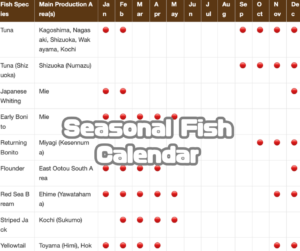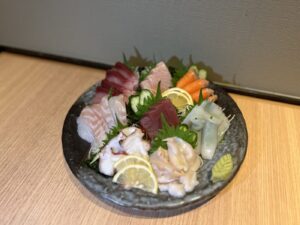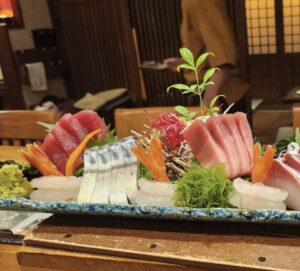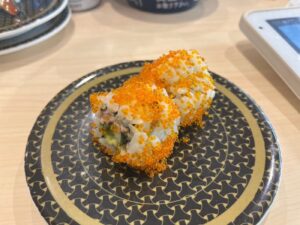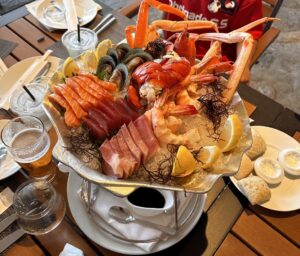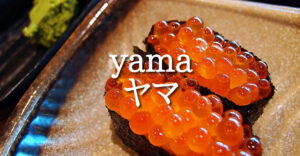There are many types of Japanese food, but sushi is by far the most popular among them, and is eaten all over the world, including neighboring Asia, North and South America, and Europe.
The types of sushi toppings that people prefer vary from country to country, but there are some trends that are slightly different from Japan.
Now that the coronavirus is coming to an end, we want to treat foreigners visiting Japan with sushi! Many people may think so.
This time, we will explain how sushi is loved overseas, as well as introduce a ranking of sushi toppings that are popular among foreigners, as well as the sushi situation overseas.
Learn more about the sushi situation overseas and enjoy sushi more than ever!
Overseas sushi situation

Changing styles of serving sushi in different countries
Sushi is popular all over the world, and its popularity is increasing year by year, and it is being served in a variety of forms.
In addition to sushi restaurants that specialize in sushi, conveyor belt sushi restaurants, which until now were only seen in Japan, are now common overseas.
In recent years, sales formats have diversified to blend into local life, such as supermarket delicatessen sections and sushi specialty delivery services.
Also, the number of restaurants that sell sushi is increasing. For example, in France, sushi is already as popular as fast food, and French chains such as SUSHI SHOP boast the same number of stores as major hamburger chains.
There are over 1,500 of them! Just by looking at this number, you can see that sushi is loved by many people regardless of the country!
Creative sushi and colorful sushi are popular overseas!
Nigiri sushi is also eaten overseas, but one of the characteristics of overseas sushi that is not found in Japan is that there is an overwhelming amount of creative sushi other than nigiri.
This trend is especially noticeable in Europe and America; in France, it has become a small French dish, in Spain, fruit sushi” is made with sweets such as mango and strawberries wrapped in sushi rice, and in Romania, chocolate is wrapped in sushi rice.Sweets sushi” and other types of sushi have been well received, and in South America such as Brazil and Chile, sushi with uramaki coated all over with bread crumbs and fried in oil is even sold, and there is a wide variety of sushi.
On the other hand, in East Asia, such as China, Taiwan, and South Korea, which are relatively similar to Japan, they still tend to prefer colors that are a little brighter than Japan. Furthermore, in Southeast Asia such as Indonesia and Vietnam, the proportion of creative sushi such as sushi rolls increases, and the colors become more and more flashy.
Each country enjoys sushi in highly original styles tailored to their dietary preferences, but considering that even in Japan, a wide variety of sushi was created in each region, it’s really interesting to see this happening on a global scale. It’s the situation.
BEST 10 popular sushi ingredients among foreigners
Now, let’s take a look at popular sushi ingredients overseas in ranking format!
This ranking was created by Sushi Walker’s editors, who have been eating sushi from all over the world for a long time, based on interviews with many foreigners and surveys by JETRO and Hakuhodo.
Furthermore, the tastes of foreigners vary considerably depending on the region, especially in Europe, America, and East Asia.
Taking these circumstances into consideration, this time, we targeted countries with deep ties to Japan, such as China, Hong Kong, Taiwan, Vietnam, Indonesia, South Korea, the United States, France, and Italy, and created a comprehensive ranking.
1st place Salmon
Salmon was overwhelmingly ranked number one in Sushi Walker’s “1,000 women’s ranking of conveyor belt sushi toppings,” and it’s also an overwhelmingly popular sushi topping overseas, even more so than in Japan.
It is very popular in various countries, both East and West, such as the United States, Russia, China, Taiwan, Vietnam, Brazil, and France, and many foreigners often say, “I can’t eat sushi, but I can eat salmon,” which is strange to Japanese people. I will meet you.
It is easy to eat because it has little fishy odor, and people seem to like it because it is fatty and has a sweet and rich taste. It is used not only in nigiri sushi, but also as an ingredient in rolled sushi, which is popular all over the world, and there are many ways to enjoy it! The variety of arrangements is also one of the reasons for its popularity.
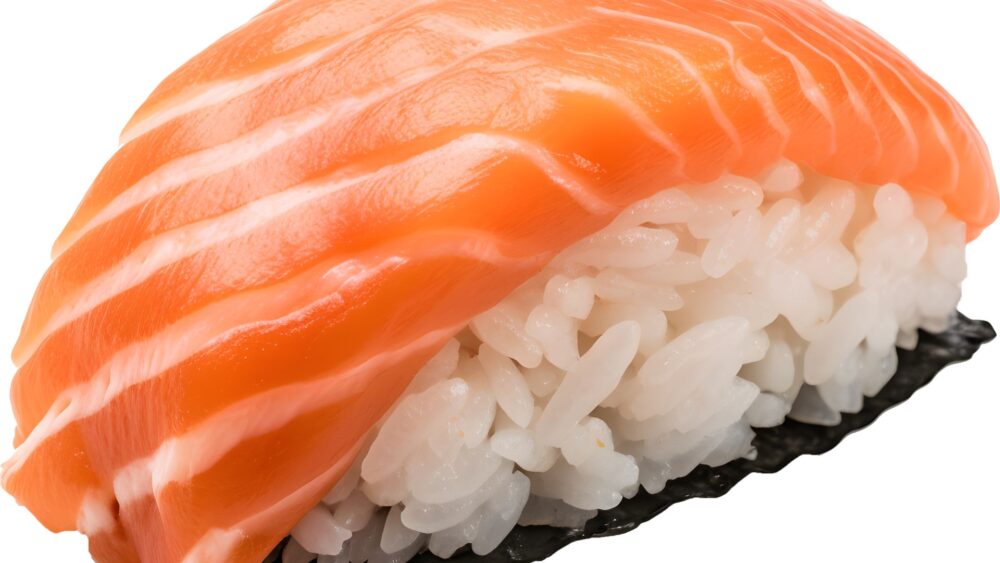
2nd place Sushi roll (Uramaki sushi)
Uramaki sushi is known as sushi roll overseas, and especially in Europe and America, sushi rolls tend to be more recognized as sushi than nigiri sushi.
It is said that it was first rolled with seaweed on the inside for Westerners who did not like black seaweed, and unlike the futomaki and hosomaki that are known in Japan, the rice is rolled on the outside, and it is used in many dishes such as California rolls, rainbow rolls, and spicy tuna rolls. It is famous for its rolls.
Generally, they are colorful and showy on the outside, often decorated with sesame seeds or brightly colored flying cubes, and the fillings inside often include avocado, cheese, and mayonnaise.
It is particularly popular in Europe, America, and South America, such as the United States, Italy, Chile, and Germany, where raw foods and seaweed tend to be disliked. I often see many sushi restaurants.

3rd place tuna
Tuna is the second most popular nigiri sushi after salmon.
Rather than the lean meat that Japanese people are familiar with, it seems that the fatty fatty and umami-rich chutoro and otoro are more popular.
It is more popular in Asia, such as China, Taiwan, Korea, and Vietnam, than in Western countries such as France and the United States, and has gained a certain status as a high-class sushi topping.
However, it does not seem to be very popular in Brazil, where it is difficult to obtain highly fresh tuna, and Malaysia, where the culture of eating raw tuna is not well established.
There are few countries overseas that have as many types of tuna as Japan, so the true flavor of tuna may not be well known.

4th place Shrimp
Shrimp is eaten in many countries such as Thailand and Vietnam, where shrimp fishing is popular, as well as the United States and France, and is also a popular sushi topping.
In Japan, raw shrimp and red shrimp are popular, but in America and France, where the culture of eating raw shrimp is less popular, steamed shrimp is the norm rather than raw. Arranged sushi that combines steamed shrimp with avocado and mayonnaise is also popular.
There aren’t many foreigners in Asia who like shrimp, but if you include people in Europe and America, it’s a sushi topping that ranks high in the rankings.
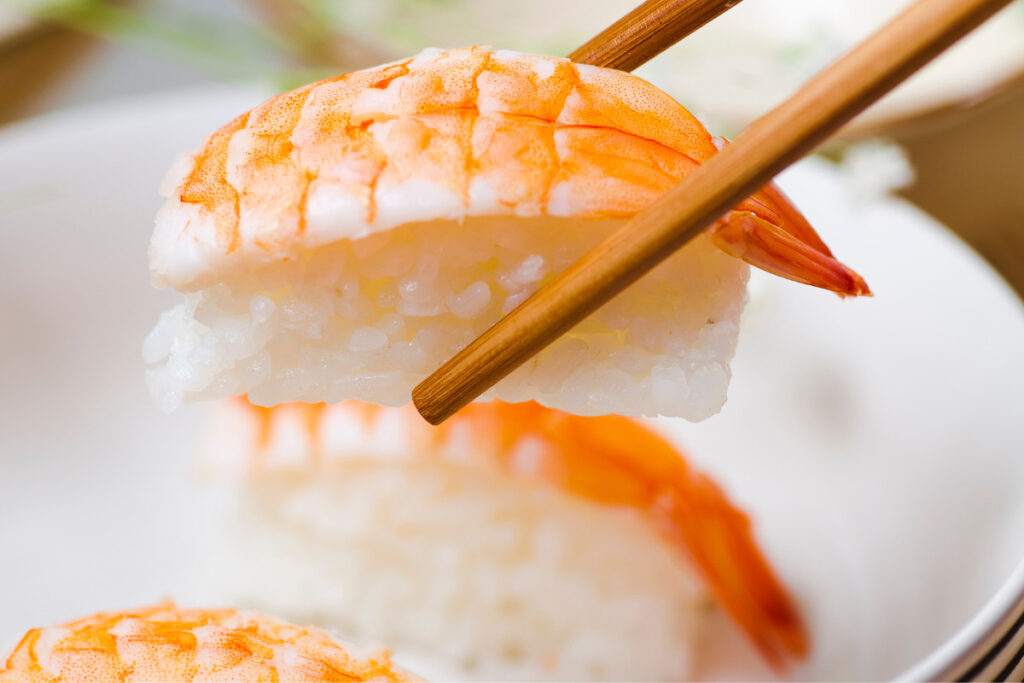
5th place Salmon roe
Salmon roe, which is very popular in Japan for its gorgeous appearance and delicious taste, is one of the most popular sushi ingredients overseas.
Gunkanmaki is the standard way to eat it, but along with tobiko, it is also often used as a decoration to create a luxurious appearance.
In France, where caviar and other fish roe are familiar, salmon roe is also included as one of the basic sushi ingredients. It is also called salmon caviar, after its parent fish, salmon.
However, in parts of Northern Europe and North America, fish roe tends to be avoided, and it seems that people either like it or hate it. By the way, the origin of the word ikura is Russian, so it is a popular sushi topping in Russia as well!

6th place Scallops
Scallops are not only enjoyed as nigiri sushi, but also as an ingredient in sushi rolls.
For example, at sushi restaurants in Canada, sushi rolls called “Beautiful Rolls,” which are scallops and mayonnaise wrapped in sushi rice, are popular.
Scallops can also be caught in the United States and France, and many sushi restaurants seem to carry them.
Scallops are a popular ingredient in China and Taiwan, and sushi made with aburi scallops is a popular topping at conveyor belt sushi restaurants, but due to circumstances such as the lack of sushi restaurants that carry it, its recognition level is lower than that of other top sushi toppings. .
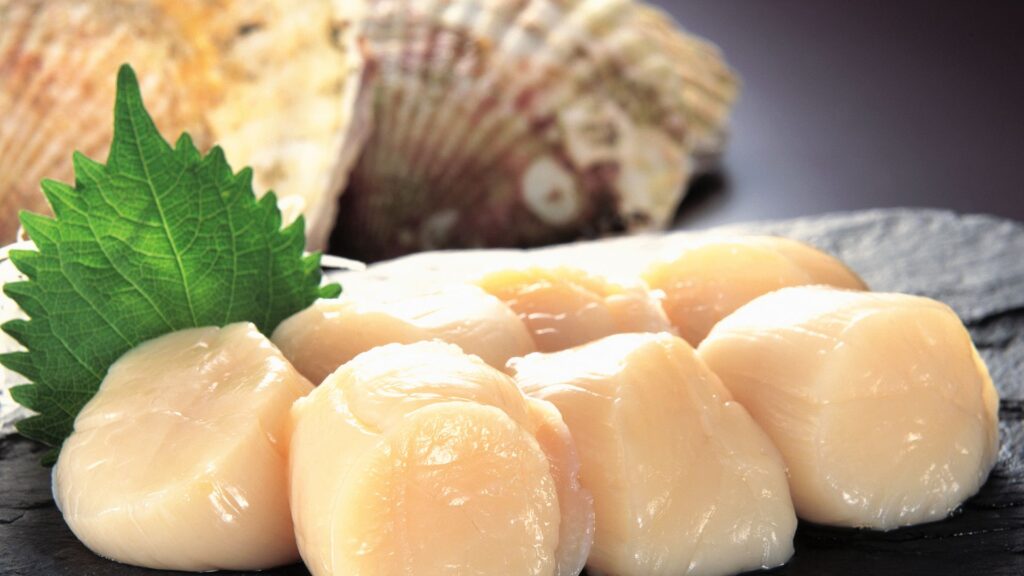
7th place Octopus
Octopus is also one of the popular sushi toppings at sushi restaurants overseas.
Octopus is also used in dishes such as carpaccio, and is especially popular in Italy, Asia, Central and South America, Greece, and Spain, making it an ingredient that is familiar to foreigners.
Overseas, boiled octopus is used rather than raw, and it is often served wrapped in seaweed.
Although some people avoid octopus for religious reasons in some countries, it is loved all over the world for its unique texture and taste, and is a popular sushi topping that is served at many sushi restaurants.
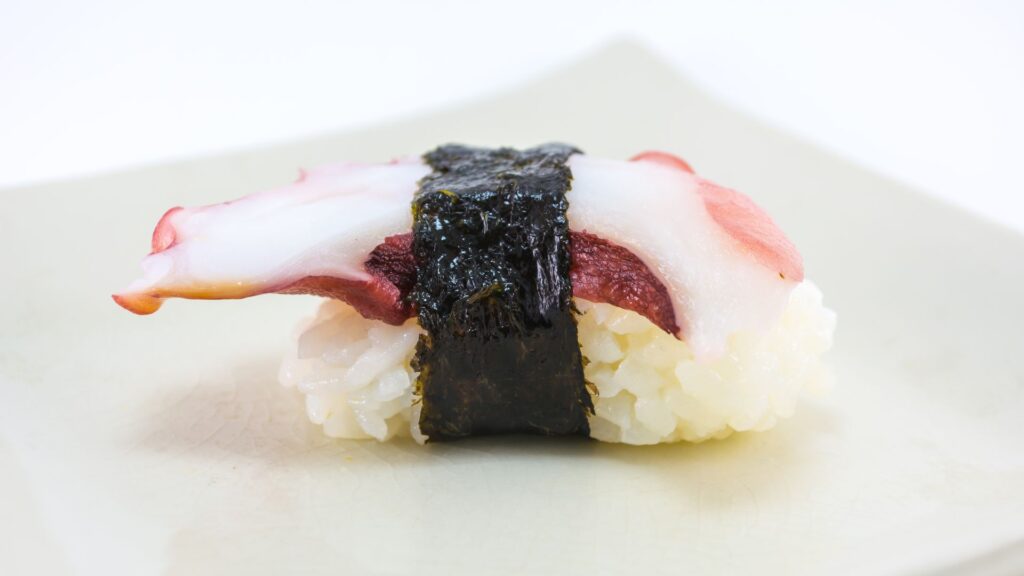
8th place sea bream
Thailand is also a beloved sushi topping in many countries.
For example, in France, it is in the top 4 most popular sushi toppings. Sushi is also popular in Korea, where it is customary to eat it in their own country, and in Italy, where it is customary to eat raw food such as carpaccio.
Thailand, which has a protein-rich taste, is often eaten as nigiri sushi rather than rolled sushi.
However, it is not a very common sushi topping in Asia and Southeast Asia, so there is a difference in its popularity between Europe and America and Asia.

9th place squid
Squid sushi is one of the sushi toppings you often see in foreign countries. Squid can be caught in many countries, which is why it is often chosen as a sushi topping. However, some foreigners have reservations about the appearance and unique texture of squid, so it is not always acceptable to everyone.
Still, squid is originally used in a variety of dishes, making it an ingredient that is familiar to foreigners and easily accepted as sushi, so squid sushi is a popular variation of sushi in many countries. It has become a sushi topping.
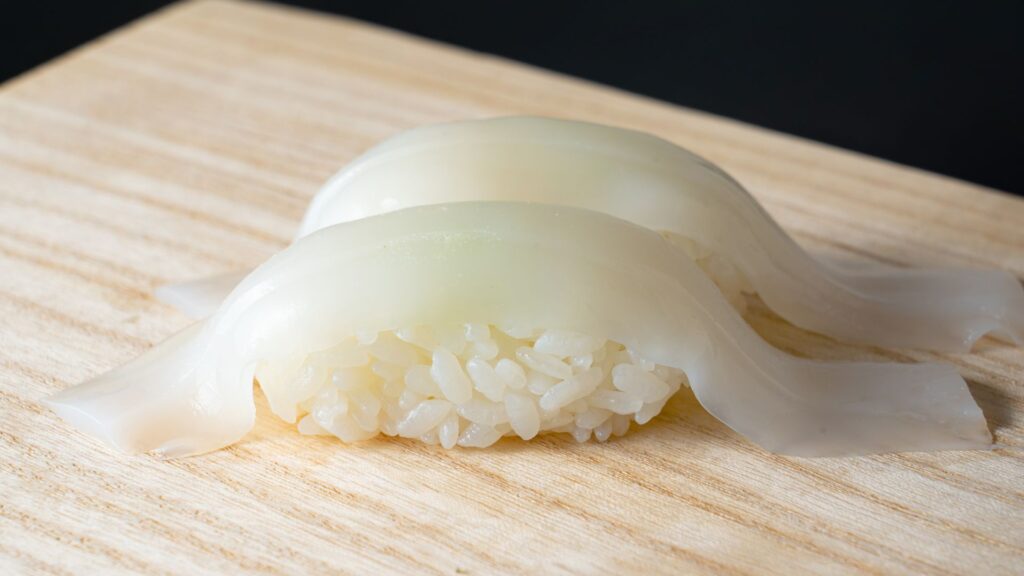
10th place Sea urchin
Sea urchin is treated as a sushi topping with very polarized tastes overseas, especially in Europe and America. In Greece, Italy, America, France, and other countries, sea urchin is caught and is eaten as Gunkanmaki (gunkan roll), just like in Japan.
Although high-quality sea urchin can be caught in Australia, many people are not accustomed to eating raw seafood, so there seems to be no demand for sushi. In addition, if the unique flavor and smell are not accepted, it may become unpopular in some countries such as Indonesia and the United States.
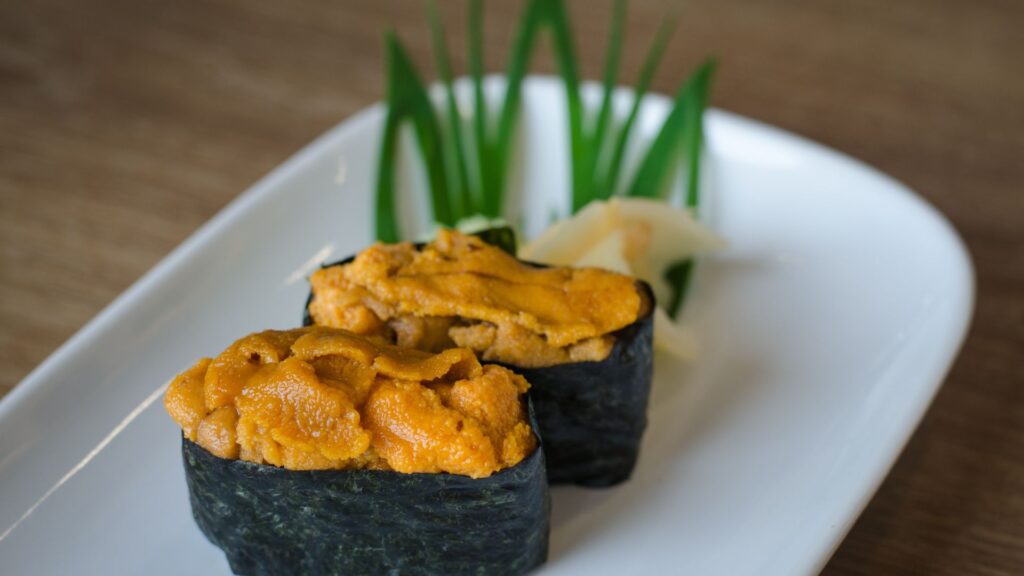
SUSHI continues to evolve overseas as it integrates with food cultures around the world!
This time, we have introduced the ranking of popular sushi ingredients overseas and the sushi situation overseas.
Although sushi is simply called sushi, eating raw fish is not customary in some countries, and tastes vary depending on the local food culture, so the sushi toppings used vary.
In addition, with the addition of unique arrangements, the lineup is even more varied than Japan’s.
They use creativity and ingenuity based on each country’s food culture to provide highly original sushi.
There are many parts that are different from the Japanese sushi that we usually see, and there are some parts that feel strange, but this is also proof that sushi is beginning to penetrate the world as a new food culture.
Overseas sushi continues to evolve. If you happen to come across one when you travel overseas, please give it a try.


